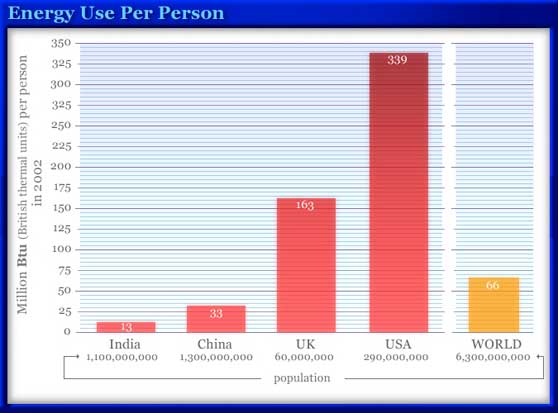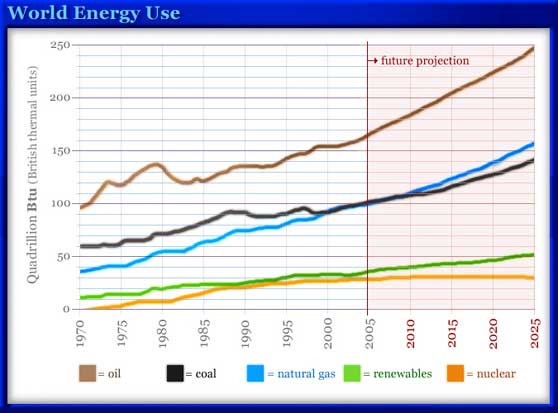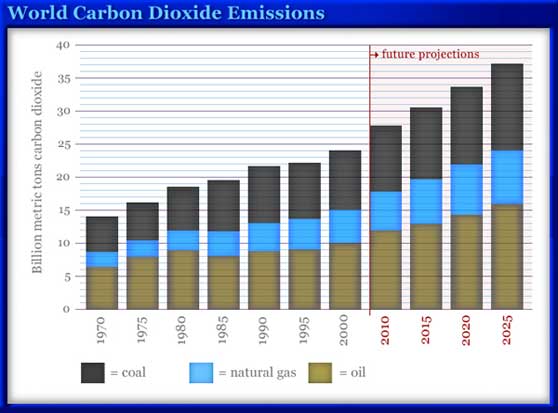Global Climate Change and Energy CO2 Production—An International Perspective
On average, in 2002, a person in the United States used 10 times more energy than a person in China and over 25 times more than someone in India.
China, India, and many other countries are developing their industries and raising their material standards of living. If everyone in the world today used as much energy as an average person in the United States, the demand for energy would be more than five times its current level.
|
Based on data from EIA. |
Fossil fuels burned in electricity power stations are the single major source of human-produced CO2, followed by transport and industry.
By the year 2025, the world's population is expected to be about 7.5 billion—an additional 1.5 billion people compared with 2004. They will need energy for cooking, lighting, travel, industry, and other activities.
|
Based on data from EIA. |
Energy use will probably continue to vary greatly from one country to another, but it will almost certainly increase overall.
The International Energy Outlook 2004, published by the U.S. Energy Information Administration (EIA), predicts that world energy use will rise by about 50% from 2001 to 2025. The use of renewable energy (including wind, solar, wave, and tidal) will grow steadily, but the burning of coal, natural gas, and oil is predicted to grow even faster.
|
Based on data from EIA. |
In 2004 we released about 26 billion metric tons (28.7 billion U.S. tons) of CO2 into the atmosphere through the burning of fossil fuels—more than four metric tons (4.4 U.S. tons) for each person on Earth. This is in addition to the CO2 being released by plants, animals, and other sources as part of the natural carbon cycle. The CO2 that we are producing by burning fossil fuels is more than can be absorbed naturally by plants and the oceans, so CO2 concentrations in the atmosphere are likely to continue to rise.
|
Based on data from EIA. |
The Carbon Dioxide Future
It is likely that we will continue our use of fossil fuels, so we will continue to produce large amounts of greenhouse gases. The United Nations has led the effort to increase awareness of global warming and greenhouse gases for more than 20 years. The 1997 Kyoto Protocol has been signed by 160 countries. They commit to slow the increase in their CO2 emissions. But not all the countries of the world have fully agreed to the Kyoto Protocol.
The search is on for technology to reduce the amount of greenhouse gases we release into the atmosphere. One approach is to use fossil fuels more efficiently so we generate less CO2 while getting the energy we need. We can also increase the use of energy sources that do not produce CO2—wind, solar, geothermal, nuclear, tidal, and hydroelectric.
Another option is to capture and store the CO2 that is produced by burning fossil fuels. This would prevent it from entering the atmosphere.This emerging technology is called carbon capture and storage.
This content has been re-published with permission from SEED. Copyright © 2025 Schlumberger Excellence in Education Development (SEED), Inc.





